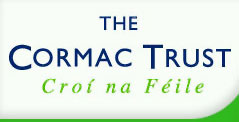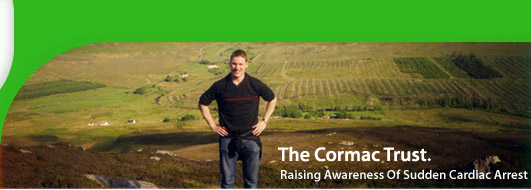Rubbing Shoulders with the Stars
It’s not often that you get to meet David Beckham or Fabien Barthez during a normal working day but Martin McCrory has had the pleasure of both their company. The Glenelly man met the two footballing superstars while working for the Adidas Sports Centre in England. It’s a hard job but somebody had to do it.
“After I got my degree in Jordanstown, I did a Masters Degree in Sports Medicine in Nottingham University, and part of that was to carry out a period of research,” Martin explained. “It was through this that I got involved with the Adidas Sport Centre during 1999 to 2001. It was Adidas’s head office in the North West, based in Stockport, where they also did marketing and sales.
“But within that office they set up a Wellness Company and I was working as a wellness consultant. Basically they had a state of the art gym, and a full medical team that would carry out health screening on individuals.
“They were called Adidas athletes – which were sports people who were signed up with Adidas – and football was only one part of the Adidas brand but the likes of David Beckham, Fabian Barthez, Harry Kewell and John Collins all came in at various times.
“John Collins actually did a full year’s study with us over the course of the football season, where we measured his heart rate and took a look at his fitness profile to see how we could improve it. John Collins was really into it and is a very intelligent guy. He was playing with Fulham at the time and wanted to get the very best out of himself and this was one way of doing it.
“This level of testing was being done at Fulham at that time, and he, as an Adidas athlete, wanted to avail of it to improve his performance.
“The big names like Beckham and Kewell were very approachable and down to earth. Beckham was very friendly and accommodating. He just dandered around and spoke to everyone and signed autographs.
“Barthez’s English wasn’t that good back then but he was also very friendly and had no airs or graces. They were all screened to analyse their fitness levels, as that was part of the package they had going with Adidas.”
The nature of Martin’s work has also seen him carry out research into the sudden death of athletes seemingly in the prime of life. Most notable examples recently would be the tragic death of Tyrone Gaelic footballer Cormac McAnallen and Armagh rugby player John McCall. The condition that caused these young men’s deaths, is one that has been studied in detail over recent years.
“The demands on young athletes today are very high,” Martin, 34, explained. “One in 100,000 people have suffered from the same condition as Cormac had, but it obviously has more resonance because he was such a talented, high profile player.
“Between four to six people die per week in the UK because of the same ailment. It’s now something which will have to be looked at in many sports.
“In American sports, anyone that goes on a sports related scholarship are given a health screen, which is a full life-style assessment. To establish if there has been any heart disease in the immediate family, blood tests and stress tests.
“This is where you are put on a treadmill and hooked up to an ECG machine and gauged on how your heart reacts when you are really exerting yourself. That’s the test John Collins did. Walking around your heat rate would be fine but once you are put under stress on a treadmill, you can see changes in the heart rate and blood pressure.
“If any abnormalities show up on the ECG after the test, then the athlete is referred directly to a cardiologist who would do more in-depth tests.
“What happened Cormac and John McCall is tragic but it is an ailment that affects people in all walks of life. The demands of both sports (gaelic football and rugby) are of such a high level now, that sportsmen may have these conditions but they are only triggered off went they are stressed to the maximum in training.”
Martin was a handy Gaelic footballer himself and played Sigerson football for Jordanstown where he won a Fresher’s medal and two Ryan Cups, as a goalkeeper. He also won a Colleges Senior League in soccer, making it a haul of four All-Ireland medals.
Thanks to his goalkeeping exploits at Jordanstown, Martin joined the Tyrone senior squad for two years between 1992-94, where he played in the National League. That’s only ten years ago but a huge amount has changed in that time.
In fact if anything, the extent at which progress has been made across the board at all levels could, in some ways, be detrimental to football in the county.
“Tyrone is such a professional set up now compared to when I was there as a player. When I was on the Tyrone panel I was actually treating players as well as playing, which gives you an idea of how much things have moved on since then,” Martin said. “The drawback here, however, is that I have kids coming in to me now at 14 or 15 years of age with injuries that they shouldn’t be having.
“It is not only because they are playing too much but because the training they are doing is too advanced for them. Tackle bags are even being introduced to training sessions at this age.
“It’s great to bring new techniques in and adopt it into the game but only at senior level. To have young kids doing these drills when their bodies are not yet fully developed isn’t good.
“The three injuries that I’ve seen predominantly in Gaelic football at under-age level now are groin, hamstrings and achilles tendon injuries purely from overuse.
“There’s a ‘win at all costs’ mentality within the county which can be unhealthy, especially when it applies to under-age football. The fun element has gone to a certain extent.”
It’s not just in football, however, that Martin has noticed a rise in injuries to youngsters. There is another popular local pastime, that is having its fair share of young casualties as well.
“Hard as it is to believe but another hobby taken up by young children that is creating injury problems is Irish dancing,” Martin said.
“It’s now become hugely competitive and youngsters are practising more and entering more and more competitions. Because their bodies aren’t fully developed for this, they are then prone to more injuries as well.
“Dancing four times a week for maybe two hours takes its toll on the young dancers. It’s the kind of training regime that a young gymnast would do.
“I’ve seen young girls who are Irish dancers, aged from around 6-10 years old, coming to me complaining of injuries they just should not have at that age.
“Because of over-use injuries are occurring to their feet, back, knees and ankles. The constant repetitive training is too much for the young girls.”
Martin runs his own physiotherapy practice at Omagh Physiotherapy and Sports Injury Clinic, 11b, Bridge Street, Omagh, and in a sports mad county there’s no shortage of injuries to treat. Although, unlike his past experiences, he’s now more likely to be treating a footballer from Moortown than one from Man Utd.
Alan Rogers, Ulster Herald.


